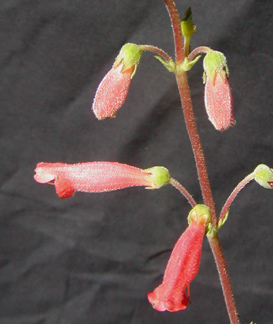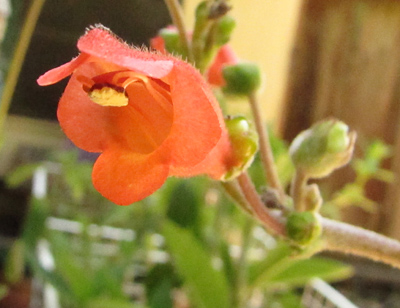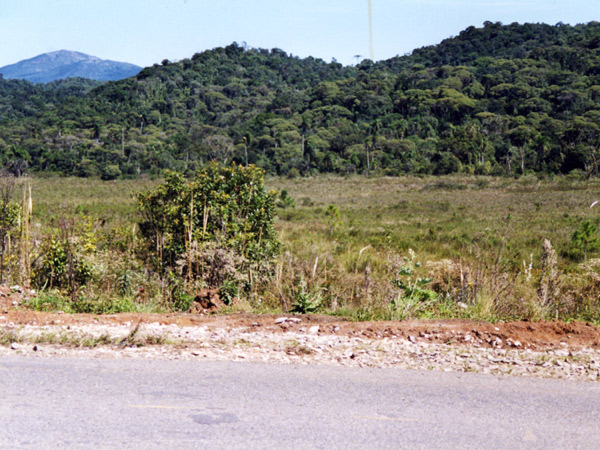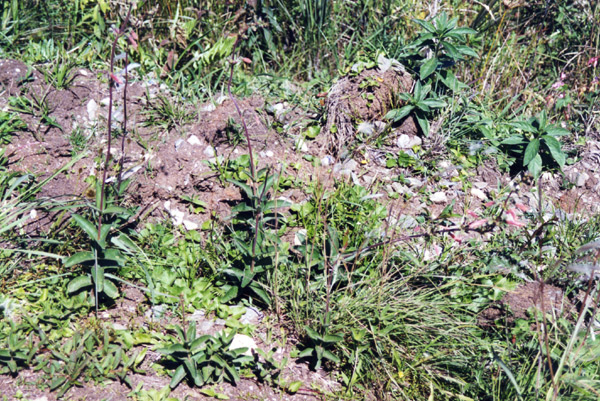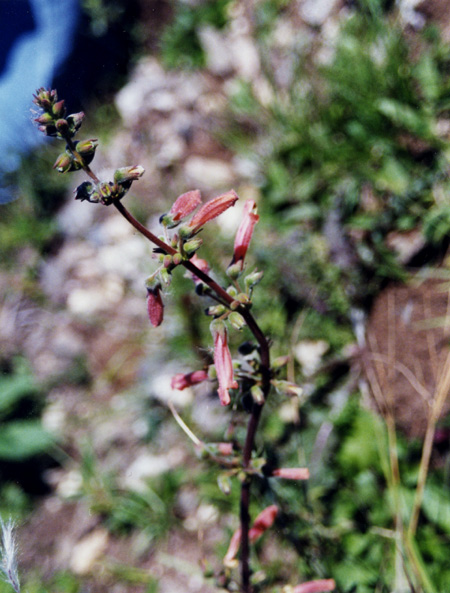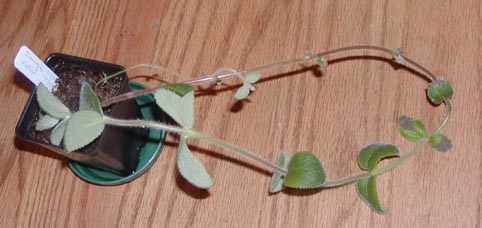|
Sinningia elatior is one of the "meadow" species,
growing in clumps with very little shade.
In habit, it resembles
S. curtiflora,
S. allagophylla,
and S. sceptrum.
This picture shows the growing shoot of S. elatior
in the spring [in this case, May 2010].
The three-fold symmetry of the leaf arrangement is easy to see.
The leaves are tightly packed until the stem begins to extend in preparation for blooming.
One interesting feature is the stiffness of the fruit pedicels.
After a flower has set seed, its stalk becomes quite rigid.
The flowers of S. curtiflora, by contrast,
have almost no pedicel, being
pretty much sessile,
i.e., flush against the stem.
In both cases, it would seem that the fruit is being protected again
being broken off by... rain? wind? animals?
|
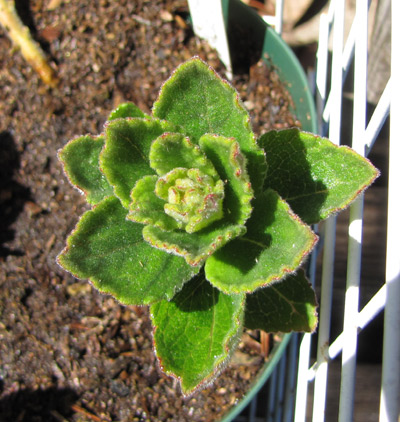
|
